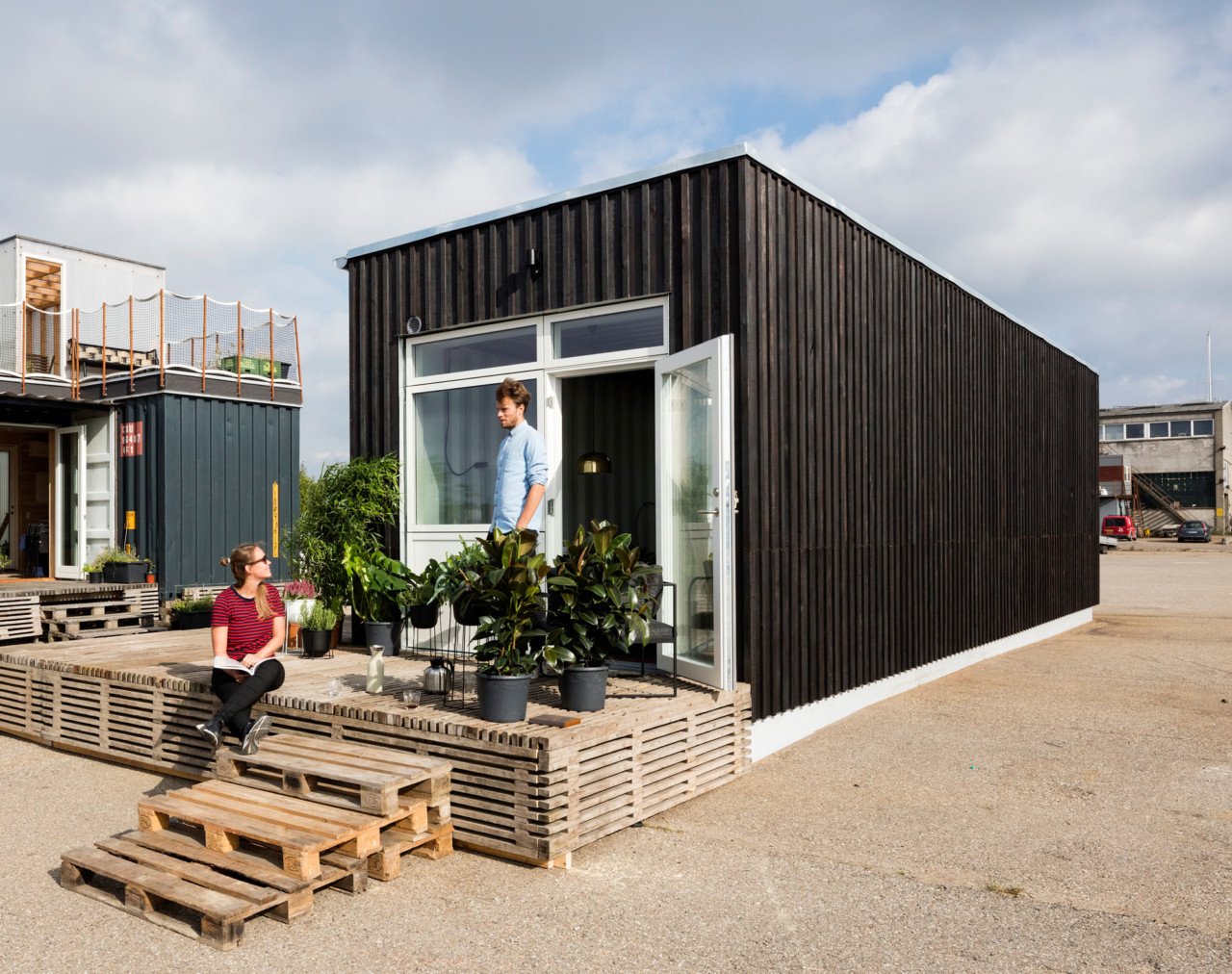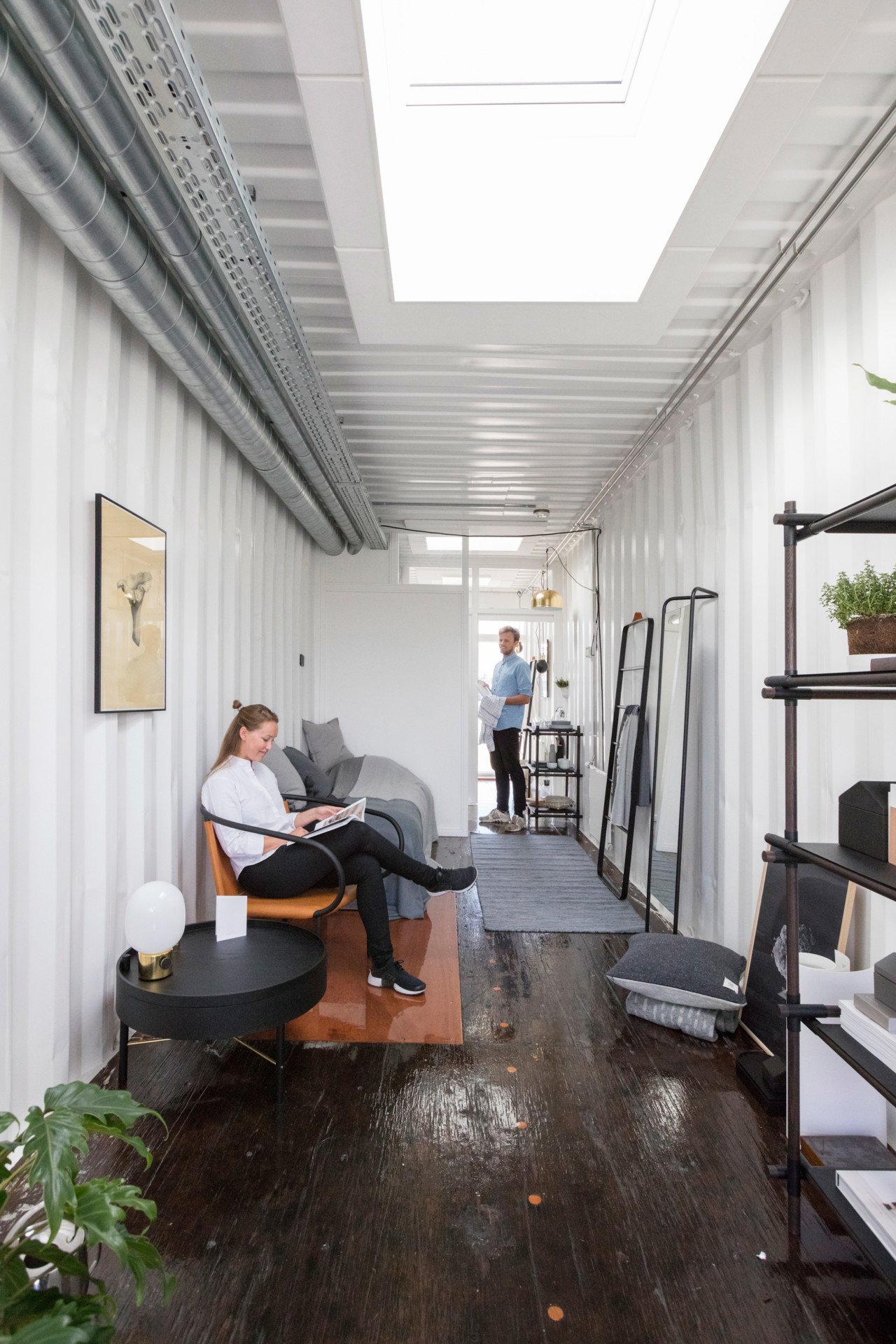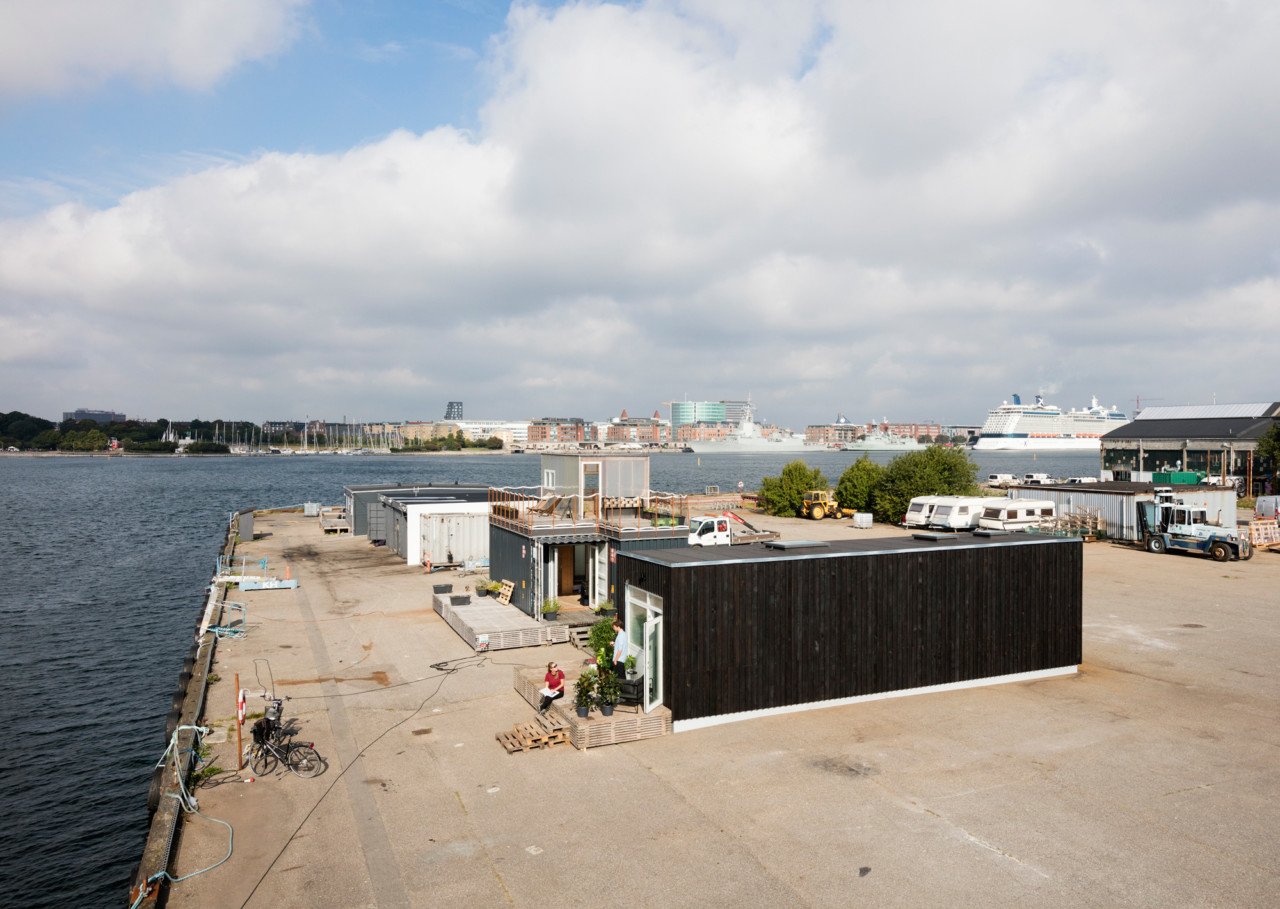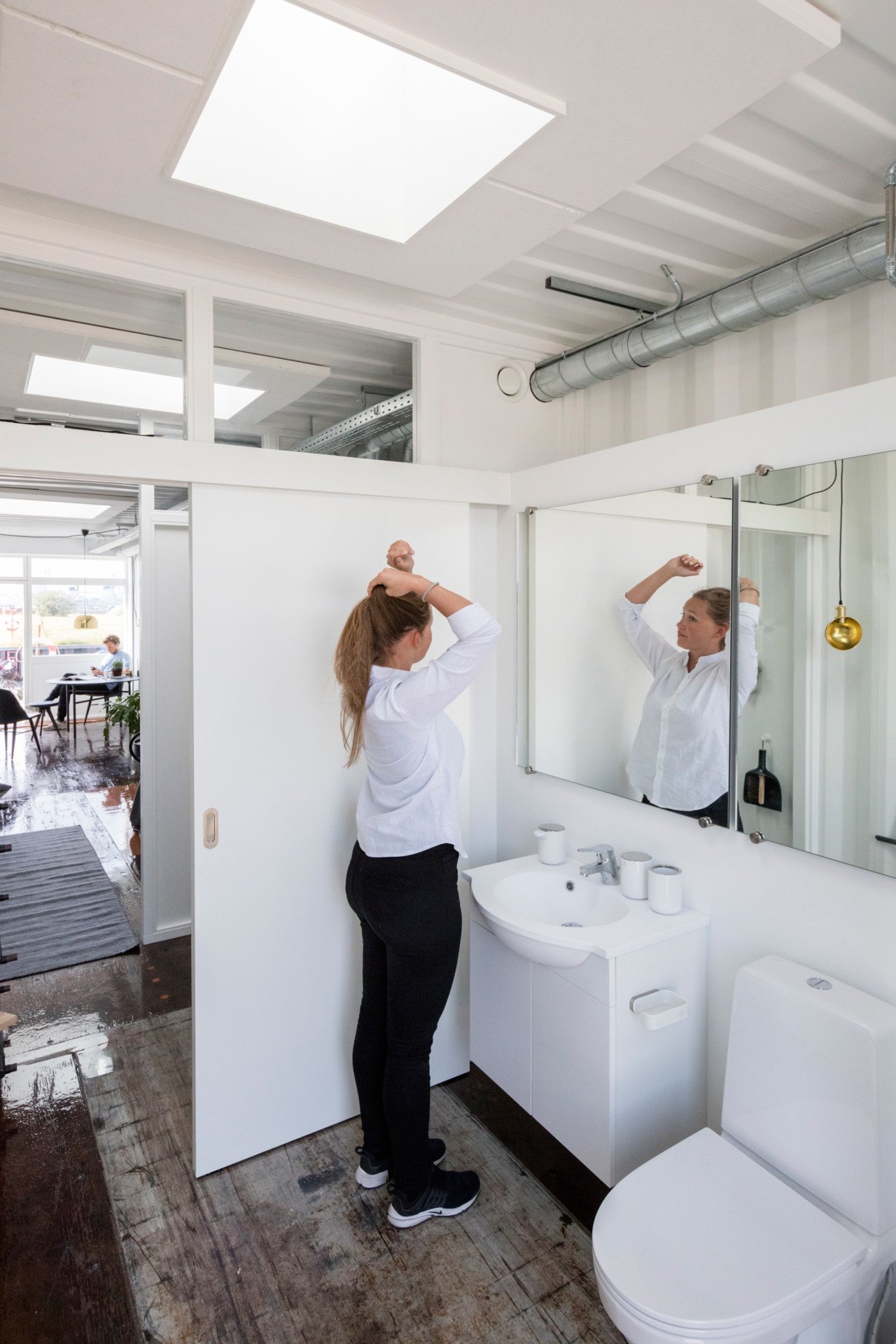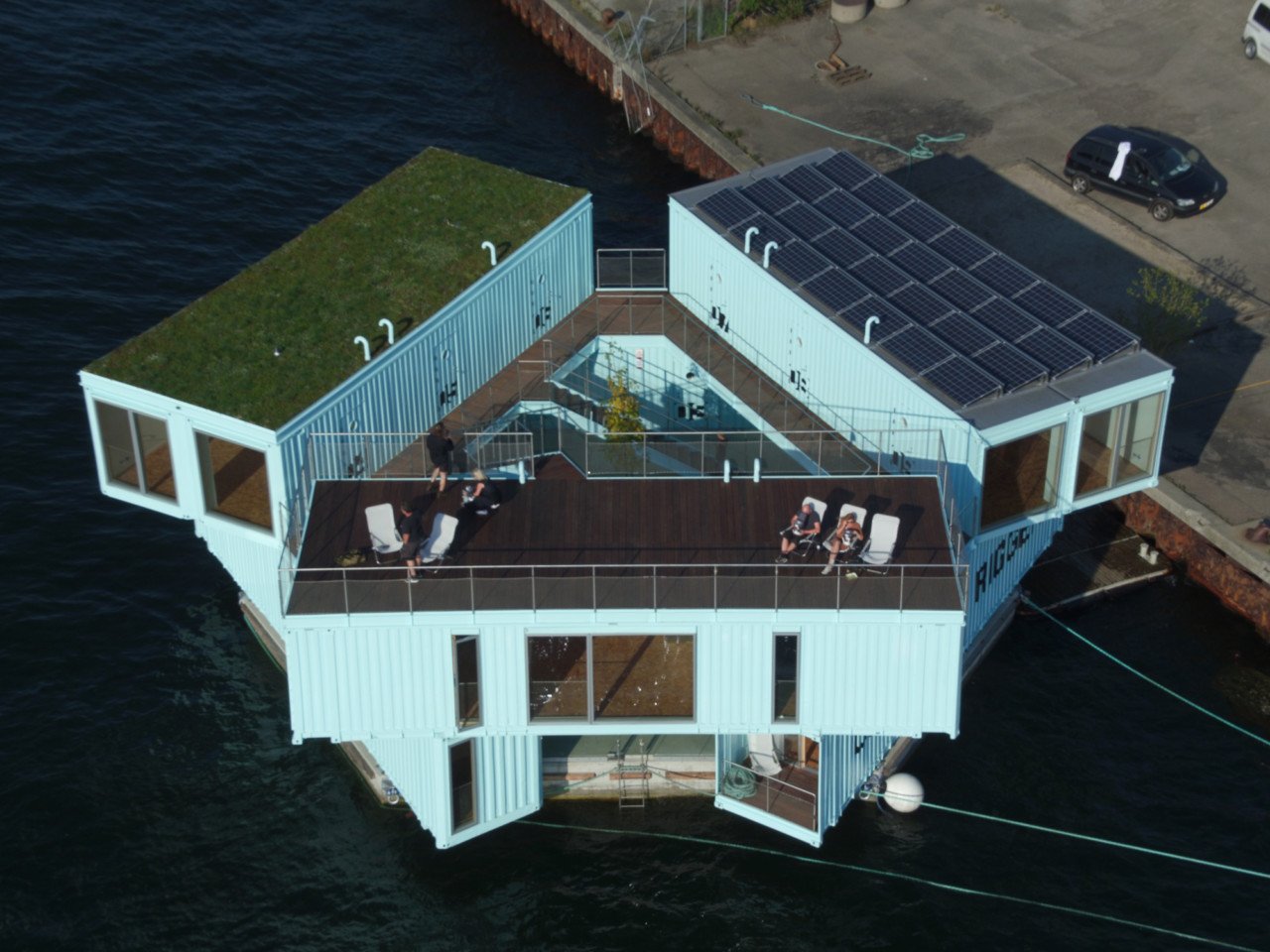Universitetsavisen
Nørregade 10
1165 København K
Tlf: 35 32 28 98 (mon-thurs)
E-mail: uni-avis@adm.ku.dk
—
Campus
Housing shortage — The first student homes in scrapped containers could be ready for the start of the semester this September.
Many saw it as an attempt to steal political capital out of the student housing shortage, when Conservative Minister for Industry, Business and Financial Affairs Brian Mikkelsen promised in January that the government would give shelter to students with homes.
Specifically, the government would amend the Planning Act, so temporary barracks and container homes could be provided for them on empty plots of land.
Now it seems like the change is actually going to give some house-hunting students a place to stay. If they are willing to call a converted container their new home.
There is still a long way before housing is found for everyone, as there is a 9,500 home shortage for young people in Copenhagen alone, according to an analysis made by the Danish Construction Association.
The first homes could be ready for the start of studies this September if everything goes as planned. 100 container homes are realistic to start with, but I expect that we in Lejerbo will reach 3,000.
Jan Hyttel, organization chairman in Lejerbo
The housing company Boligselskabet Lejerbo will be the first to have 100 student residences ready in shipping containers at a rent of approximately DKK 3,000 if the City of Copenhagen agrees to the plan, says organization chairman in Lejerbo Jan Hyttel.
The Technology and Environment committee in the City of Copenhagen is to hear the case, and the City Council also has to approve the plan before the containers can be set up. But Jan Hyttel is hopeful because »we have had a good dialogue with city authorities.«
»When we start, things can move fast, so the first homes could be ready for the programme in September if all goes as planned. 100 container homes is realistic to start up with, but I expect that we at Lejerbo reach 3,000. Other housing companies with empty plots may well do the same,« says Jan Hyttel.
He will not reveal where the container homes are to be placed exactly, as long as they have not yet got the permits from the city council, but it will be fairly close to one of the city’s major educational institutions or in close proximity to public transportation, he says.
While Lejerbo is ready to get started, other private investors are awaiting new planning legislation to be passed by parliament. The bill has been through its first hearing and will, according to the schedule, be put up for a final vote on 5 May.
The government parties, together with the Social Democrats and The Danish People’s Party have already entered an agreement on the Planning Act before the summer last year. But they only gave municipalities permission to allow container housing on unused land for up to three years with the possibility of an extension.
That has now changed, so they must be able to be set up for a decade, after objections including one from the business CPH Containers. Three years was too short a time horizon for investors to want to finance the project, and the rent would also be too high.
CPH Containers has already set up a sample container in the Refshaleøen district.
According to Frederik Noltenius Busck, one of the two sponsors of the project, the first ‘removable student residence’, as they prefer to call it, will be ready in September this year – if the law is adopted as expected.
It takes about three months to have a container ready for habitation. The rent the 20 square meters with own kitchen and bath is expected to be DKK 3,850 a month. A two-person home of 40 square meters will be DKK 5,850 before housing subsidy.
»We have three specific plots on hand and financing from banks and investment funds are in place, so we’re just waiting to get started,« he says.
CPH Containers goal is to reach 1,000 sustainable container housing units the first year and 2,500 by 2020, but the company reckons that approximately 20,000 container homes can be built in the capital city on the plots that, according to the district plans will be empty within the next 10-15 years.
Tempo Housing Scandinavia, a Dutch specialist in container homes, is also waiting for the new planning legislation to be adopted. According to chairman Thomas Jørgensen, several housing associations and investors have already contacted the company.
»We are looking at two plots of land, and investors are on board. One project is for 150 homes and the other for 300 homes, so we are just waiting for the law to be adopted,« he says.
Tempo Housing Scandinavia is already in the process of building 460 container houses in Gothenburg, Sweden and Thomas Jørgensen is looking forward to bidding for the contract when Lejerbo and other players put their projects out to tender.
The company Urban Riggers is also on hold, but not because of the Planning Act. The company is to set up floating container homes designed by Bjarke Ingels’ studio BIG, but so far the city council has only given permission to set up a pontoon for 12 homes on the Kalvebod Brygge quay in Copenhagen, and the problem is a lack of berths.
We are looking at two plots of land, and investors are on board. One project is for 150 homes and the other for 300 homes, so we are just waiting for the law to be adopted
Thomas Jørgensen, Chairman of the Board at Tempohousing Scandinavia
The homes are 24-27 square metres and will be rented out furnished with a kitchen, dining and sleeping area and en suite at a cost of between DKK 4,000 and DKK 6,000 a month.
According to Kim Loudrup, director of Urban Riggers, they have already sold 288 floating student residences in Gothenburg and 70 rigs, corresponding to 840 homes in France, while »Copenhagen appears to be sitting on the fence a little.«
»We would really like Copenhagen to wake up and start seeing the possibilities here. We have offered the municipality 1,200 student residences without it costing them a cent. They just have to release the permits and the berths for pontoons. There are 42 kilometres of quay space in Copenhagen, so this should be possible,« says Kim Loudrup.
Yasmin Davali, chairwoman of the Danish Union of Students, has spoken in favour of organizing student residences in containers.
»It’s really bad to be a young student in the large cities right now. The housing shortage is so massive that there’s no way around temporary solutions like container housing. So if the quality and price are in order, then I think it is a good solution to an urgent problem,« she has said to the newspaper Information.
In the same newspaper, Claus Højte, the director of tenants’ lobby group LLO said:
»If you can put some of these containers up in a hurry, it might take out a little air from the high- pressure housing market in Copenhagen. I am on the rent tribunal, where we hear cases of students who have to rent a room for DKK 8,000 a month. Typically two students share a room like this of 20 square metres so they can afford it. But it’s only designed for one person.«
Mayor for technology and environment Morten Kabell’s press officer says they will consider applications for specific container projects after the adoption of the new Planning Act.
